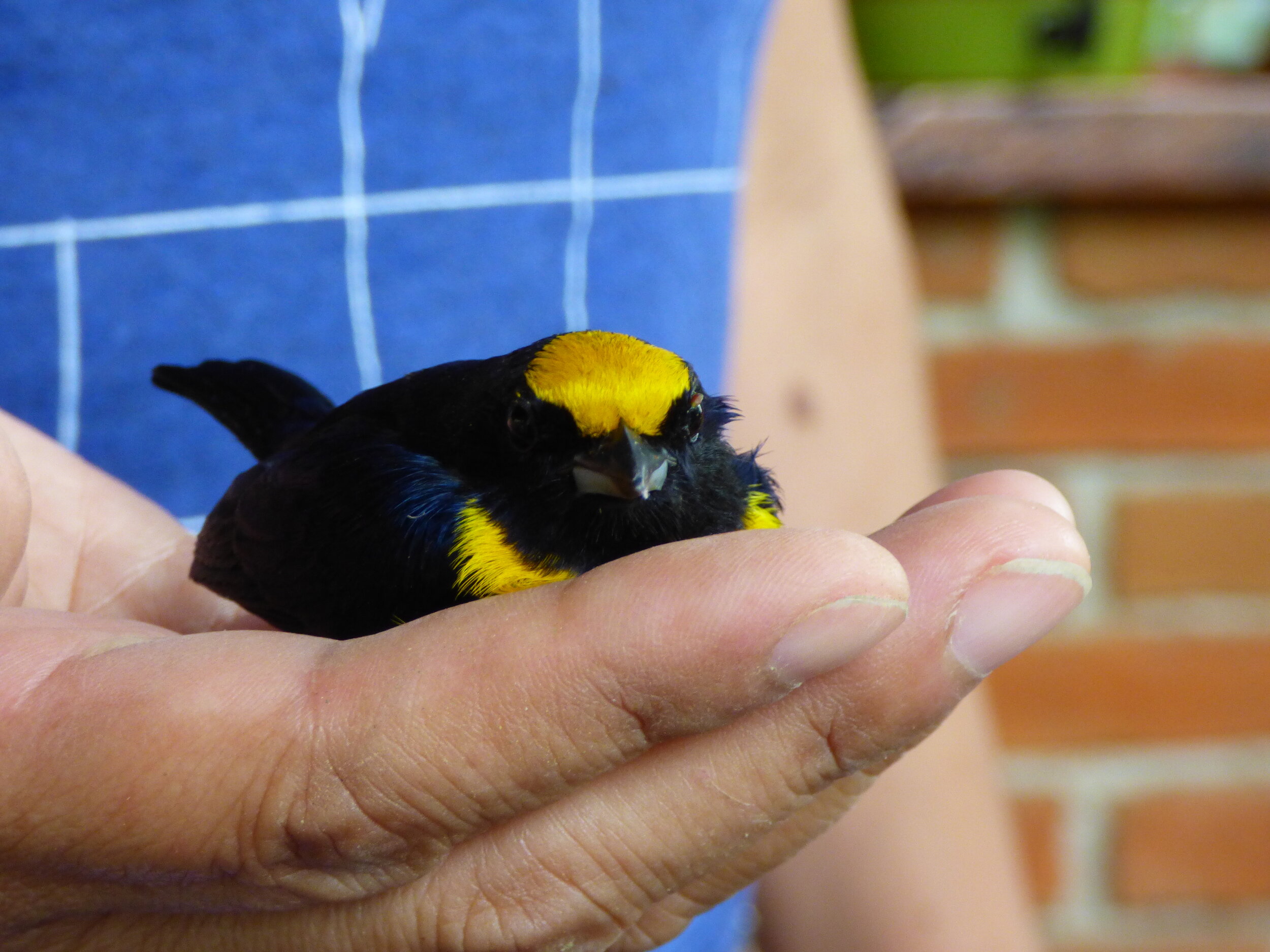Digital Library: Flora and Fauna
DIGITAL LIBRARY: FLORA & FAUNA
This library is a work in progress. Our goal is to document and celebrate the diversity of animal and plant life at Nido de Vida and to be more more aware of the other beings around us.
Little Devil Poison Frog (Oophaga sylvatica)
Sometimes known with its Spanish name diablito, is a species of frog in the family Dendrobatidae found in southwestern…read more.
The Pleasing Fungus Beetle (Erotylus onnaga Lacordaire)
As one of the inoffensive ones, all we need to worry about is fully appreciating their beauty!
The Rufous Motmot (Baryphthengus martii)
Rufous motmots feed on insects, lizards, fish, crabs, and also consume many fruits, especially those of palms and Heliconias. These birds often sit still on a canopy perch, and in their dense forest habitat can be difficult to see, despite their size and colour. Read more
Orange-bellied Euphonia (Euphonia xanthogaster)
The Orange-bellied Euphonia feeds mostly on berries, fruits, insects, and other small invertebrates (they especially likes spiders). They form mixed feeding flocks with other small species. In this photo, we see a male Euphonia.
Trametes versicolor
Is a member of the Polyporosae family, and can be found throughout the world. It is found on the dead wood of deciduous trees, and can be found year round. Polysaccharide-K, is extracted from Trametes versicolor, and is being investigated as a treatment for different types of cancers.Conclusive evidence of efficacy has yes to been found.
Can be found in pairs, and often in small groups searching for fruits, insects or small animals like. This toucan communicates through a far-carrying cry described as “Díos te dé” (Spanish for "God give you...").
Owl Butterfly (Caligo prometheus Nymphalidae)
This butterfly is known for its huge eyespots, which resemble owl eyes. Due to their large wing spans these butterflies are very slow in flight, and can only fly a few yards at a time.
Cup Fungi (Cookeina Tricholoma)
Of the family Sarcoscyphaceae, they are found in tropical and subtropical regions. In some parts of the world, they are used as food and bait for fishing.
The Brazilian red-cloak is a stunning plant that can grow up to to 8 feet tall (roughly 2.5 meters). It’s native to Venezuela but now found through the tropics for its spectacular crimson bracts with small white flowers. In constantly warm temperatures the Red Cloak can bloom throughout the year
Scarlet Scar (Guzmania Lingulata)
Is one of the most common bromelias that you’ll find at your local gardening store (there are about 120 guzmania species). You’ll also see this eye popping bromeliad throughout Nido de Vida as it grows spontaneously in the forest.
The pale-mandibled aracari, or pale-mandibled araçari , is a species of bird in the...read more.
All we can determine is that this stunning plant is part of the bromeliad family. We are still researching specifics, but if you can help us identify its species, contact us. Otherwise, stay tuned.
Reishi Mushroom (Ganoderma lucidem)
Distinguished by circular red cap with a light brim, tending to a shiny yellow when young to a opaque when mature. Medicinal uses focus on the immune system, cardiovascular system and prostate gland.
The Green Leaf Mimic Katydid (Typophyllum mortuifolium).
Abundant in humid tropical areas, these critters are part of a group of insects known as Pterochrozini, which mimic leaves. But not just new green leaves — no, these bugs have perfected the art of the speckled, decaying, and chewed leaves.









